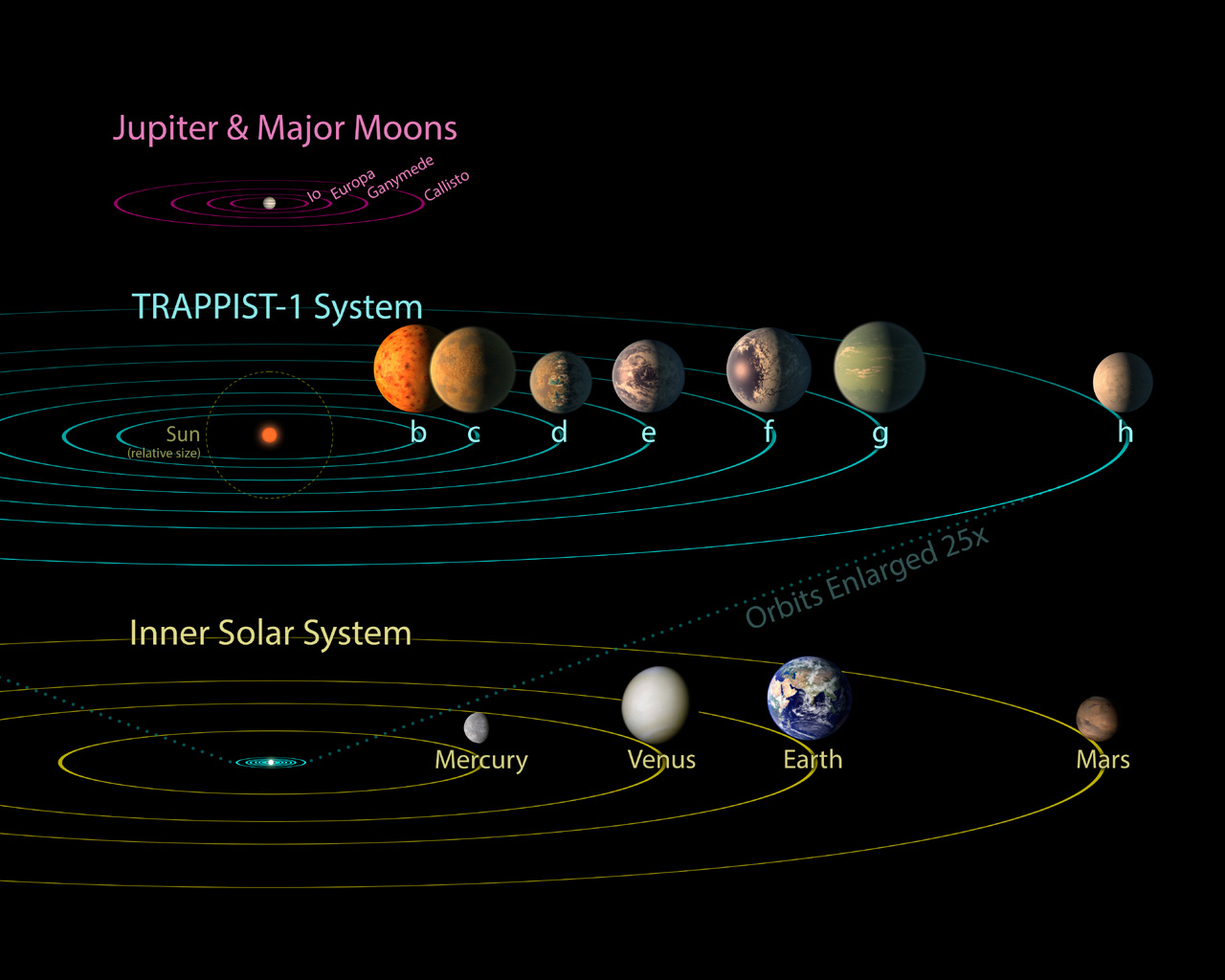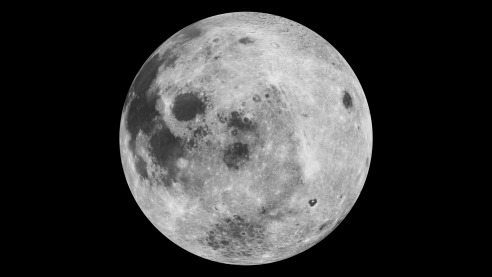The innermost planets, Mercury and Venus, don’t have moons, but Mars has two. Go beyond Mars to the giant outer planets and the number of moons per planet skyrockets. Mars’ moons are small irregular-shaped bodies, perhaps captured asteroids, but Jupiter has three moons bigger than our own, a fourth that is almost as big, and 75 known small irregular-shaped moons. Saturn has seven moons large enough to be spherical, one of which rivals Jupiter’s biggest, plus at least 55 small irregular moons. Uranus and Neptune have fewer known moons, but they include world-sized bodies with landscapes to rival the best that their inner neighbours can show.
We will probably wait at least another 50 years before humans visit any except Mars’ moons, but robotic spacecraft have studied some of the moons of Jupiter and Saturn well enough to establish that they are high-priority targets for future robotic missions. The moons of Uranus and Neptune have been barely glimpsed by just one passing spacecraft, but this was enough to show that they too have fascinating tales to tell. The only large moon with a rocky surface is Jupiter’s innermost large moon, Io. Apart from its size (1,821km radius) it could hardly be more different from the Moon (1,738km radius), because it has dozens of volcanoes erupting at any one time.
For my money, Europa’s internal ocean is the likeliest venue in the whole Solar System to host extra-terrestrial life.
Some eruptions that are powered by expansion of sulphur dioxide gas send plumes of volcanic ash hundreds of kilometres into the sky; others emit lengthy lava flows of a composition akin to basalt. The global resurfacing rate by lava and fall-out from the plumes is so high that not a single impact crater has escaped burial.
The heat source that powers Io’s activity is not radioactive, as for the Earth and (in the past) the Moon, but tidal. Tidal interactions between Io and the next two moons outwards, Europa and Ganymede, which take respectively twice and four times as long to complete one orbit, stoke enough heat into Io’s interior to melt the magma bodies that continually rise towards the surface to feed the eruptions.
All other large moons in the outer Solar System contain a lot of ice, as well as rock. Io probably did too originally, but this has long since been entirely lost to space thanks to the volcanic eruptions. Io’s closest neighbour Europa has about 100km of ice hiding its rocky interior. This might seem a lot, but it is a smaller fraction of ice than possessed by other icy moons.
Europa is tidally heated less strongly than Io. Here the lower part of the ‘ice’ layer is liquid water overlying warm, tidally-heated, rock. It is pretty clear that Europa has a global ocean below its surface ice shell, and that this shell is repeatedly cracked apart by tidal stresses, and that occasionally whole patches melt completely, exposing the underlying ocean to space.
The only outer planet moon where a probe has landed is Saturn’s largest moon, Titan. This has a dense atmosphere of mostly nitrogen and a few percent methane.
For my money, Europa’s internal ocean is the likeliest venue in the whole Solar System to host extra-terrestrial life. Chemically-charged water escaping back to the ocean floor after reacting with the hot rock of the interior could have all the ingredients necessary to support microbial life of the kind found today in the sunless depths of the Earth’s oceans around ‘hydrothermal vents’.
There’s a much smaller icy moon of Saturn called Enceladus that also has an internal ocean, and which expels jets of ice crystals tainted with organic molecules from cracks near its south pole. We know this because NASA’s Cassini mission discovered and then flew through them, analysing their chemistry. If we were to send a better-equipped probe, it might be able to detect definite signs of life by analysing plume material without even having to land on the surface.
The only outer planet moon where a probe has landed is Saturn’s largest moon, Titan. This has a dense atmosphere of mostly nitrogen and a few percent methane. The European Space Agency’s Huygens lander reached Titan’s surface by parachute in 2005, landing in a plain strewn with alluvial pebbles. This looked deceptively Earth-like except that the pebbles are water-ice and the floods that had transported them resulted from methane rainfall.
Using radar from space, the Huygens mothership Cassini imaged polar lakes still filled with liquid methane, and supplied by methane rivers entering the lakes via drowned river valleys. There is a whole hydrological cycle on Titan, based on methane rather than water.
 Comparison to Solar System and Jovian Moons.
Comparison to Solar System and Jovian Moons.
This article was originally published in the Summer 2019 edition of The Geographer - the newsletter of the Royal Scottish Geographical Society.







Rate and Review
Rate this article
Review this article
Log into OpenLearn to leave reviews and join in the conversation.
Article reviews